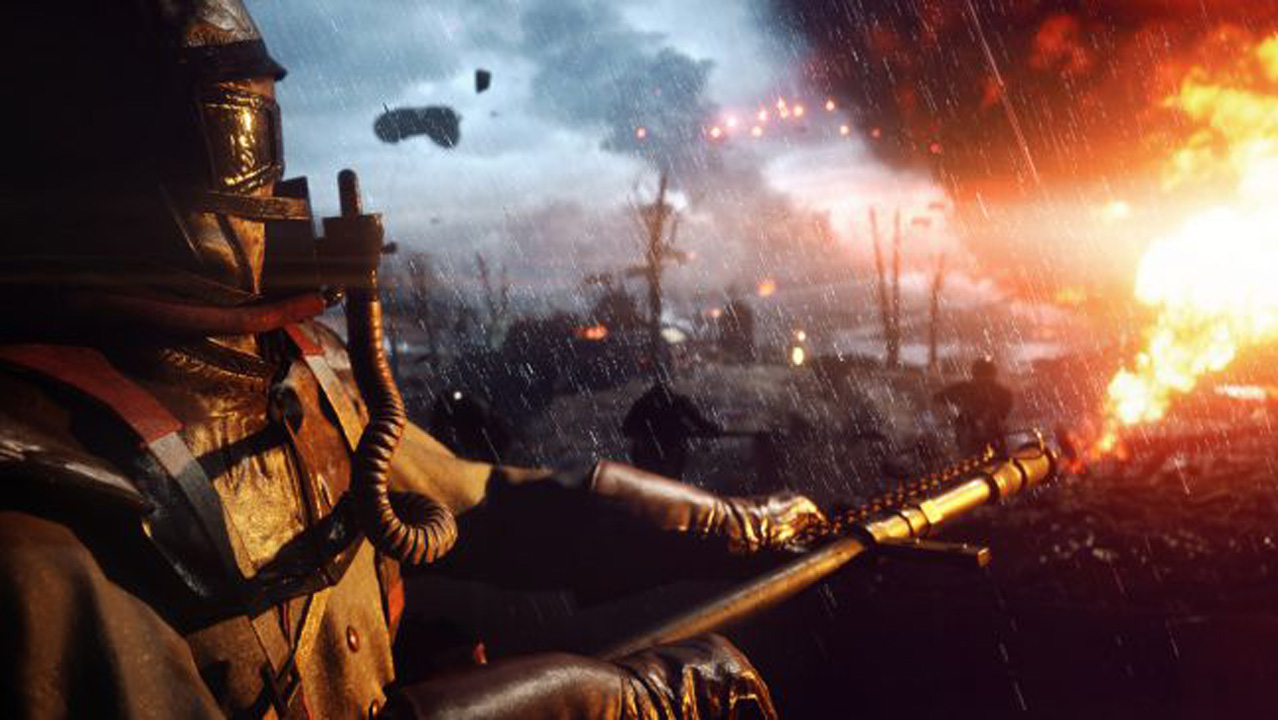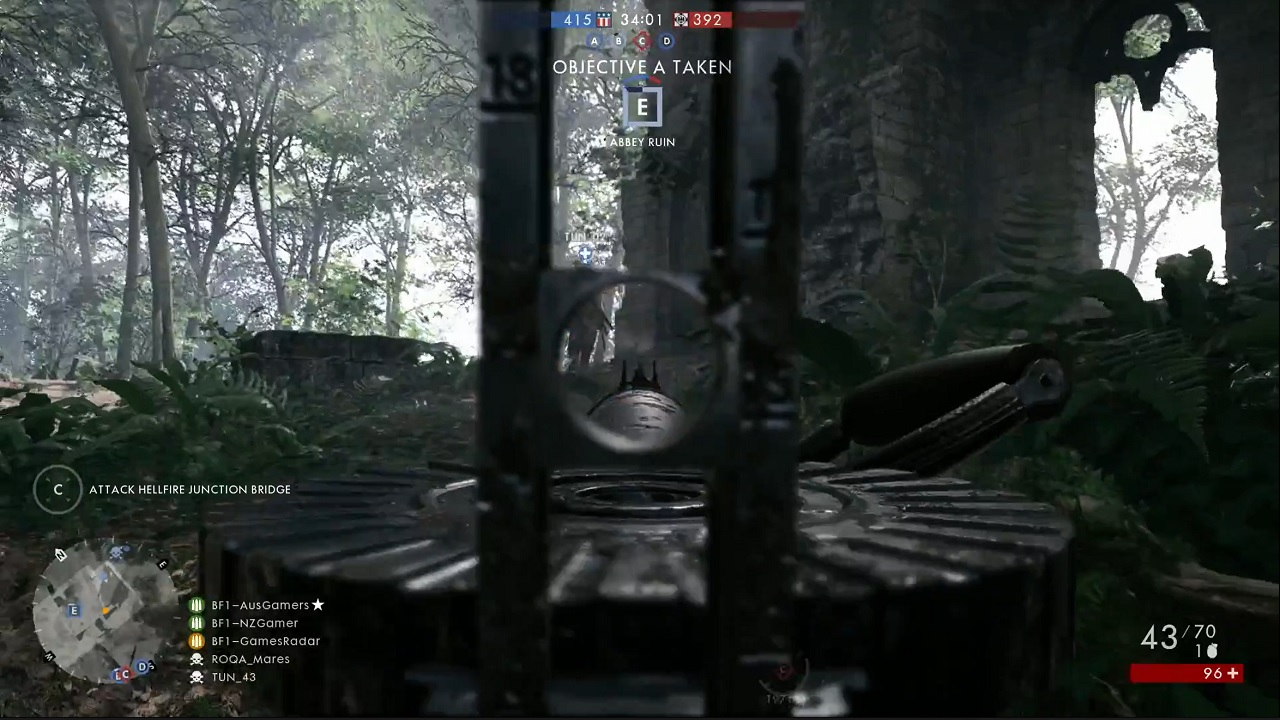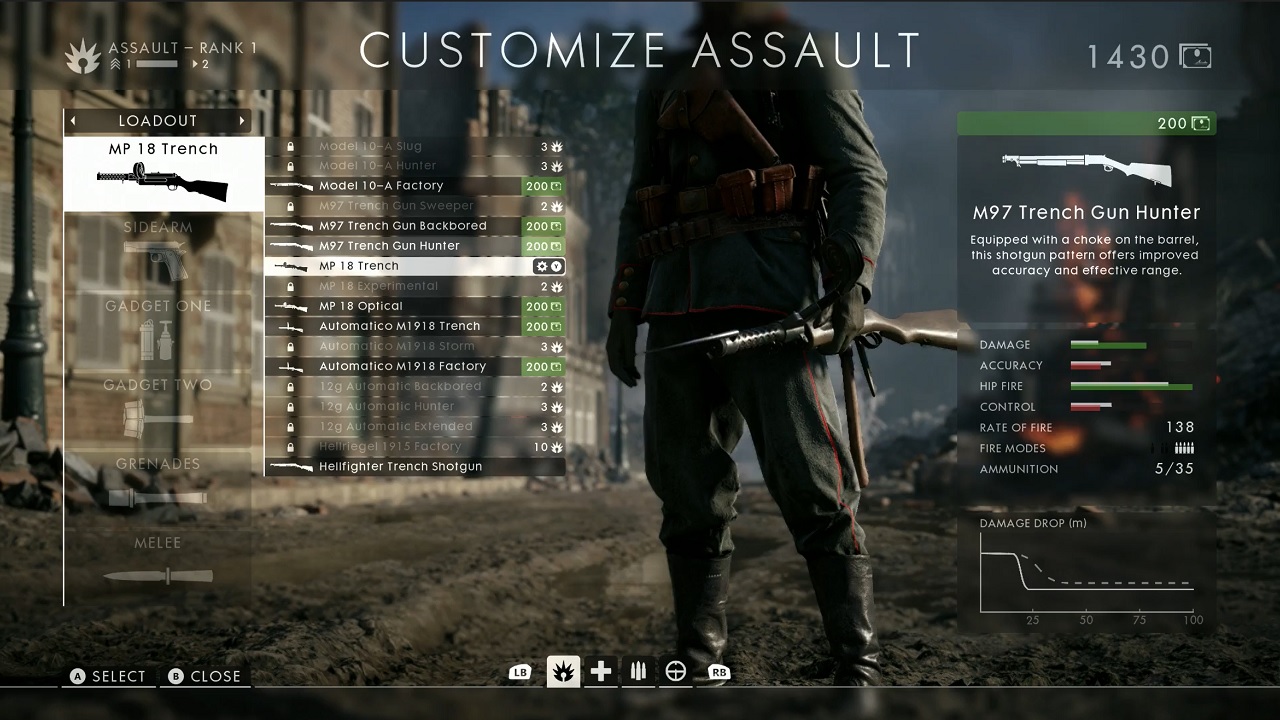Battlefield 1's chaotic multiplayer is more fun because of its crappy weapons

Even with the shift from the modern setting of previous games to the dawn of the 20th century, Battlefield 1 is still very much a Battlefield game. I've explored some of the modes you can find in Battlefield 1's Play First Trial - including two single-player War Stories, and one of the game's handful of Operations - but now, I'm going to dig a little more into its multiplayer, to explain how it's adapted the technology of the era to its tried-and-true multiplayer gameplay.
There are, of course, the larger-scale modes like Conquest, which pits up to 64 players against each other on massive maps based on the Western Front, the Italian Alps, the Middle East, and other theaters of World War 1. Here, two teams vie for control over various points as battle lines shift forward with each successful push by the attacking team. Operations, which is new to Battlefield 1, strings together a handful of Conquest maps over multiple rounds and ties in bits of actual history to give you a better sense of the scale of the actual battles these maps are based on.
This is where Battlefield 1 is at its best, where the chaos of war reaches its most unhinged as soldiers run to and fro across rolling hills, through trenches and bombed out bunkers, manning vehicles, calling artillery strikes, and more. I haven't been a fan of similar modes in prior Battlefield games - especially the more modern ones - because they've been too chaotic, the weapons too precise due to the advancements in technology over the last hundred years of warfare. Battlefield 1's weapons are more rudimentary, less precise, less reliable (in the sense that these are weapons built in 1918, not that they'll jam on you mid-combat), and it slows everything down just enough to give you a real fighting chance, to let you soak everything in.
Airplanes will speed overhead fast enough for you to feel threatened, but not so fast that you miss them completely before they bomb you out of the sky. The zeppelins that appear on further rounds of Operations matches are very powerful against ground units if they're positioned correctly, but they're incredibly slow to maneuver, you're still aiming with relatively ancient iron sights, and their accuracy is more "close enough" than "right on target". Even the sniper rifle, as accurate as it is compared to the other weapons, is balanced by the fact that you have to manually chamber the next round after each shot. The crappier weaponry actually makes Battlefield 1’s large-scale combat feel much more personal and aggressive, and makes playing it far less frustrating than the absolute chaos of Battlefield's prior combat arenas.

You'll also get the most out of Battlefield 1's various classes here. You have your typical Assault class, loaded up with automatic rifles and anti-tank weaponry. Less aggressive, but no less important, classes include the Medic, who can revive and heal teammates, and the Support class, who keep their squad stocked with ammo and repair tanks. Lastly, there's the Scout, who can snipe enemies from afar, or use a pistol to commit war crimes by launching mustard gas into the fray. Gas will kill friend and foe alike, but it won't do it instantly - players can press a button to put their gas mask on, which will protect them from the deadly vapor while also preventing them from aiming down their weapons' sights. In Operations and Conquests modes, each class has a specific purpose and are all equally valuable and capable on the battlefield.
Battlefield 1 handles vehicles a little differently, and it's both a blessing and a curse. Rather than just putting a bunch of tanks and planes on each map, you essentially choose them like a class when you spawn - complete with their own personal weapon loadout in addition to their vehicle - and each side only has a limited amount of vehicles to work with. This does wonders to prevent each match from being completely overloaded with ridiculously overpowered tanks, helping to provide a natural escalation of conflict over the course of a match. On the other hand, since they're not appearing on the field in set intervals, it’s much more difficult to actually get your hands on one. It's pretty easy to spawn into an available tank turret or co-pilot seat if they're not currently occupied, but if you want to pilot them yourself, you have to hope they're not completely gone by the time you can select one on the map and hop into it. You can also choose a cavalry class, which throws you on a horse and gives you a few guns and a sword to mow down the opposition with, but I was never really able to get a good hang of using it without immediately getting shot off my saddle.

In addition to these classes, occasionally, elite equipment will appear on the map, which will transform you into a different class entirely. You can don suits of armor and wield a chain gun, or strap a deadly flamethrower to your back. It's not easy to rely on them, as it seems they appear randomly throughout a match, but they do a good job of changing things up, and can tilt a battle a little more in your favor if you use them right.
Weekly digests, tales from the communities you love, and more
While Operations and Conquest are the meat of Battlefield 1's multiplayer, there are a few smaller modes If you're looking for something a bit more intimate. Domination is essentially an even smaller version of Conquest, which puts the capture-the-point mode on much more contained map. Rush is similar, but instead of holding a set of points, the attacking team must secure and blow up sets of telegraph posts across the map. Team Deathmatch is your standard 'kill the opposing team for points' mode, though you can revive your teammates to prevent the opposition from scoring. War Pigeons is one of Battlefield 1's stranger modes, requiring teams to hold onto a carrier pigeon long enough to write a message and send it off to call in an artillery strike - and the opposing team can shoot it out of the sky once you send it if they're quick enough.

There are even going to be a series of rotating, custom-developed game modes rolled out over time by DICE themselves. One version I played was called Fog of War, which stripped us of our radar and team indication icons, and forced each player to use only their pistols and melee weapons. It actually changes things up quite a bit, as it's really easy to empty an entire clip into someone before you realize you're not doing any damage because you're shooting your teammate.
The modes are fine, and offer a bit of a reprieve from longer Operations matches (which can last over an hour), but with smaller player counts and tighter maps, they lack some of the tactical depth of Battlefield 1's larger game types. For instance, since people die so fast in Team Deathmatch and War Pigeons and their smaller maps lack vehicles, the Support class becomes all but useless.
I'm still in the process of finalizing my thoughts on Battlefield 1's multiplayer, and I'm still working through each of the individual single-player War Stories, but as someone who's found Battlefield's brand of warfare to be a little too alienating in the past, Battlefield 1's combat and structure seem to strike the right balance between speed and chaos. Look for my final Battlefield 1 review tomorrow October 17th here at 3am PST / 11am BST.



